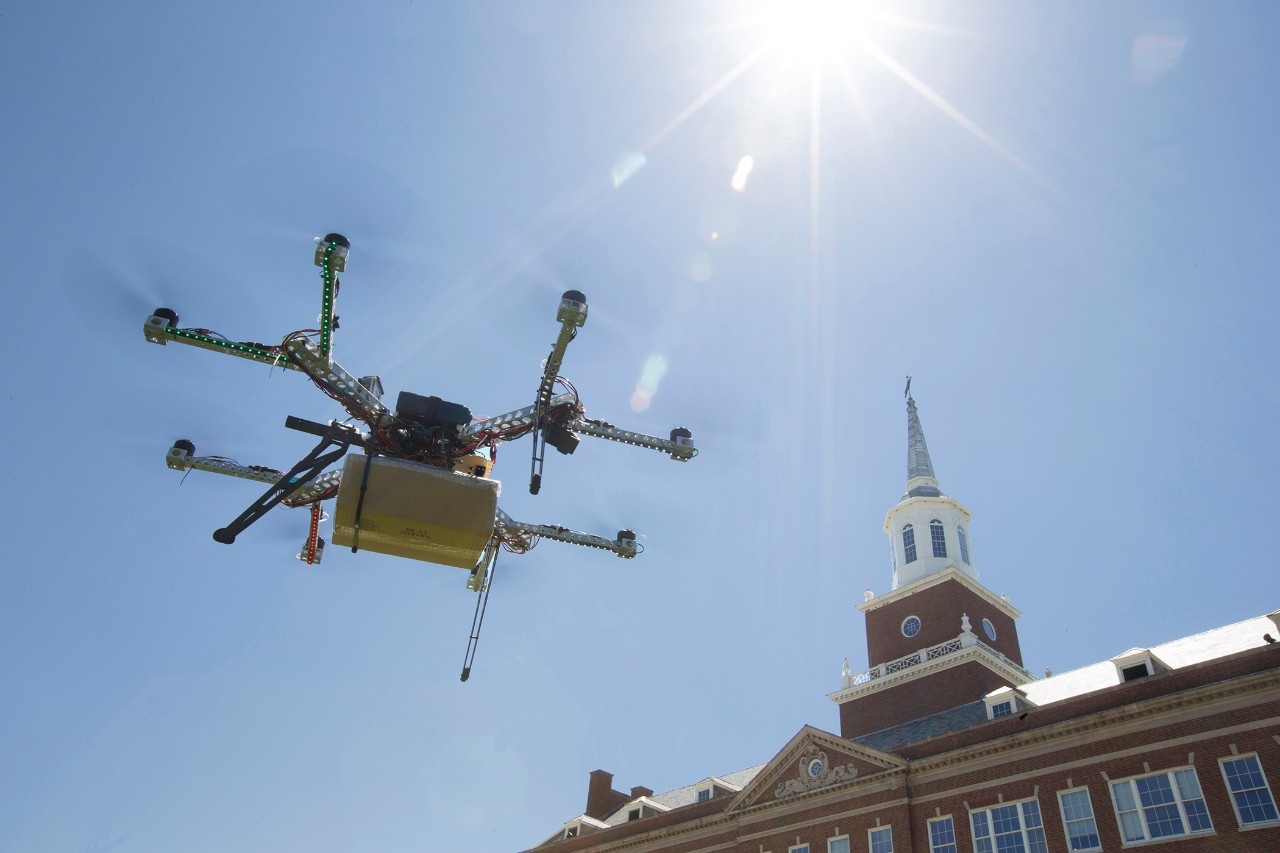
UC student combats drone traffic with fuzzy logic

UC mechanical engineering student Zoe Lee. Photo/Provided
Unmanned aerial vehicles (UAVs), commonly known as drones, have been at the forefront of research across the country, and it's no surprise why: Drones have the potential to revolutionize our everyday lives. From package delivery to traffic management to emergency response, drones are changing society as we know it.
But just as we saw with airplanes in the last century, as more vehicles enter air zones, society must adjust to the difficulties that come with them. Crowded and congested airspace can present real issues for drones, and without air traffic control centers, these drones need ideas that makes air travel safe.
This summer, University of Cincinnati student Zoe Lee (mechanical engineering '20) is spending her cooperative education (co-op) rotation in the UAV Master Lab, working on developing solutions for these crowded airspaces. Her focus is in fuzzy logic.
"Fuzzy logic is a way of thinking that's more human than computer," says Lee. "It's an alternative to binary logic. Instead of zeros and ones, you're essentially talking about subcategories within variables."
As with most things in life, fuzzy logic doesn't deal with everything in black and white, like a binary system would. Lee uses a blade of grass as an example.
"You may say a blade of grass is green, but that's not technically accurate," she says. "There's some green, yes, but there's also brown and yellow."
Fuzzy logic works in a similar way. Drones are not just far apart or close together; they operate within variables of speed, angles and trajectory.
Take a math problem that we're all familiar with: Train A, traveling at 60 miles per hour, leaves Chicago heading toward St. Louis, 300 miles away. At the same time, Train B, traveling at 70 miles per hour, leaves St. Louis heading toward Chicago. When do the two trains meet?
In this problem, you only have to address two variables to find the answer: distance and speed. With drones, it's much more complicated. Drones do not always go the same speed in a straight line. Add weather, battery life and a couple hundred other drones to the mix, and you can start to see the appeal of an alternative to binary logic.
In a sense, fuzzy logic allows UAVs to make their own decisions, based on human reasoning.
With fuzzy logic, you make certain rules based on experiences and trial and error, and you have the UAV basically think for itself.
Zeo Lee, UC mechanical engineering student
"With fuzzy logic, you make certain rules based on experiences and trial and error, and you have the UAV basically think for itself," says Lee.
It's not quite like neural networking (drones learning from past behavior), but it is rooted in the same principles of rationality: These drones can adapt to situations based on the rules (or variables) the programmer has set.
This summer, Lee is wrapping up research on fuzzy logic systems that she started last fall. She is currently making final changes to software that tests the drone's ability to reach a marked goal point (destination) while avoiding obstacles (other drones). The whole project is a fine dance between two dominant fuzzy systems: As the drone flies, its default setting is to reach its goal. If intruders get in the way, however, the drone switches its fuzzy system to obstacle avoidance.
Lee's work highlights UC's commitment to innovation, a core platform within its strategic direction, Next Lives Here.
During her time working on this project, Lee has benefited from the guidance of mechanical engineering professor Manish Kumar, Ph.D.
"Professor Kumar makes sure everyone in the lab is on the right track. He likes to meet with students one-on-one and has been very helpful," says Lee.
Lee hopes to see her work with fuzzy systems implemented in hardware testing. She also plans to work with Kumar to try to publish a paper and submit it to a national conference.
After UC, Lee plans to go on to graduate school in astronautical engineering. With a passion for astrophysics and space exploration, Lee is at a launching point of a promising career in the aerospace field.
Next Lives Here
The University of Cincinnati is classified as a Research 1 institution by the Carnegie Commission and is ranked in the National Science Foundation's Top-35 public research universities. UC's graduate students and faculty investigate problems and innovate solutions with real-world impact. Next Lives Here.
Related Stories
Information Security Roadshow spreads awareness
May 3, 2024
The University of Cincinnati's Office of Information Security launched a series of 18 in-person sessions from January to April 2024, drawing nearly 350 attendees from the staff of various UC colleges and units. The Information Security Roadshow series aimed to equip the audience with knowledge on prevailing cyber threats, prevention strategies, how to report incidents and resources to stay informed and secure.
UC launches new study of 'forever chemicals' in drinking water
May 2, 2024
The University of Cincinnati is launching a new investigation at its groundwater observatory to examine the ways toxins from distant sources get into drinking water.
Civil engineering professor honored with Titan of Industry award
May 1, 2024
Richard Miller, University of Cincinnati College of Engineering and Applied Science professor, was recently celebrated with the Titan of the Industry award by the Prestressed/Precast Concrete Institute, a technical institute and industry trade association.
